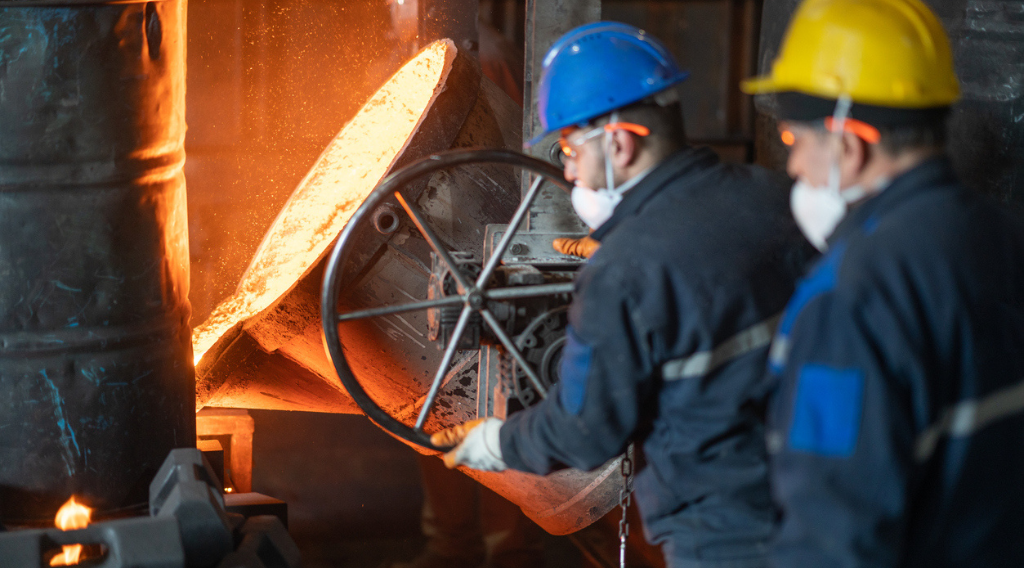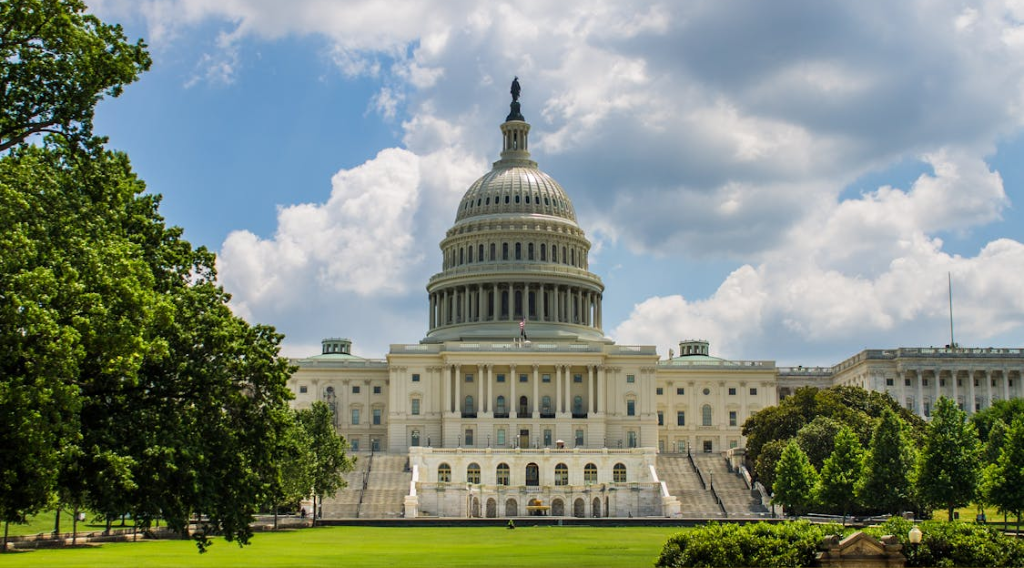
Great Plains Institute hosted the second CO2NNECT virtual event, Scaling Net-Zero Infrastructure: The Climate, Jobs, and Investment Benefits of Deploying CO2 Transport and Storage,” on April 20, 2021.
This virtual event highlighted the essential importance of carbon dioxide (CO2) transport and storage infrastructure in achieving global net-zero emissions and meeting midcentury climate goals, while sustaining and growing a high-wage energy, industrial, and manufacturing jobs base.
The event included featured remarks, moderated international and domestic sessions, and the release of final results from the Rhodium Group’s jobs and investment analysis. Speakers and panelists highlighted the leadership and policy tools needed for deployment of CO2 transport and storage infrastructure at the scale necessary for climate ambition.
This blog post provides highlights from the remarks and discussion along with the full event recording below.
Rhodium Study: Investment and Jobs Benefits of Economywide Deployment of Carbon Management
The Rhodium Group’s Associate Director, Whitney Herndon, opened the webinar with the final national results of a study, commissioned by GPI, that quantifies the economic impacts of carbon capture deployment in the near- and medium-term (2021-2035) and long-term (2036-2050).
Here are a few key takeaways from the presentation:
- The study results highlighted how carbon capture can provide a multi-billion dollar investment opportunity in technology needed to achieve net-zero emissions. The study also showed that these investments can lead to good-paying jobs.
- Looking at the expected adoption of carbon capture technology on existing plants, this technology can provide over 100,000 construction and operational jobs by 2035 and an additional 50,000 ongoing operational jobs by 2050 in the U.S.
- Over 1,000 existing industrial and power facilities are projected to adopt carbon capture technology, ultimately creating up to $500 billion in investment opportunity and capturing over 1 gigaton of CO2 per year.
Remarks by David Livingston, Senior Advisor to U.S. Special Presidential Envoy for Climate John Kerry
David Livingston, the Senior Advisor to U.S. Special Presidential Envoy for Climate John Kerry, emphasized that as we work to address the climate challenge, it also presents “an opportunity to invest in ourselves, our people, communities, and to create solutions that will pay dividends for decades to come.” Livingston highlighted the opportunity to lift up the nation’s strengths in diversity and innovation as we shift to a sustainable path. He described the importance of carbon capture in reducing emissions in key industrial sectors we can’t afford to ignore, such as steel, chemicals, and cement, which are difficult to decarbonize and are the backbone of our economy. Livingston continued, “helping these industries to embrace more innovative and efficient processes will be critical to ensuring our competitiveness in the 21st century.”
Panel Discussion: The Role of Carbon Capture & CO2 Transport and Storage Infrastructure in Achieving International Climate Ambition
Our guests in the international session shared groundbreaking examples of leadership and financial commitment to large-scale deployment of CO2 transport and storage infrastructure in Europe.
One project in particular, the Longship project, was referenced by panelist Minister Tina Bru, the Minister of Petroleum and Energy in Norway, as “the greatest climate project in Norwegian industry ever.” The Longship project will demonstrate the full value chain of carbon capture—from capture to transport and storage. Minister Bru noted that reducing emissions is the main goal and overall principle guiding the project. There will be a lot of jobs created with the infrastructure for carbon capture. This technology is the future for companies and producing their products in a sustainable way.
Dr. Dominik von Achten, Chairman of the Managing Board at HeidelbergCement, provided insight on the carbon capture project at the HeidelbergCement’s Norcem Cement plant in Brevik, which is a part of the Longship project. Although the capture technology on the cement plant is supported through HeidelbergCement’s ambitious climate goals, Dr. von Achten noted that the success of the project was the Norwegian government’s ability to pull together the critical infrastructure and storage pieces.
Mechthild Wörsdörfer, the Director for Sustainability, Technology and Outlooks at International Energy Agency (IEA), agreed with Dr. von Achten on the need for sharing the opportunity and investments among government and private entities. Without help from the government, it is a huge task and investment for companies, and eliminates smaller companies from participating. The goal of the large Longship investment in Norway is to not be the first and only large-scale carbon capture value chain project, but to see similar projects emerge. Minister Bru noted, “this will not be considered a success if we don’t see similar projects popping up throughout Europe.” Norway has full belief that this project will help bring the costs down for future projects throughout the world and is willing to take on the risks and the costs for this purpose.
Wörsdörfer also highlighted four key roles carbon capture can play in decarbonization, as reported by IEA:
- It uses existing infrastructure in plants. Globally, there are young power plants and industrial plants and there needs to be a way to have decarbonization solutions for these existing assets.
- It is a cost-effective pathway to scale up low-carbon hydrogen.
- For some heavy industry sectors, such as chemicals, cement, steel, aviation, and long-distance transport, carbon capture and storage is the only decarbonization solution ready for commercial deployment today.
- The removal of carbon from the atmosphere through direct air capture and bioenergy with carbon capture, which are gaining momentum.
Remarks from David Turk, Deputy Secretary, U.S. Department of Energy
David Turk, the Deputy Secretary of the U.S. Department of Energy, provided individual remarks highlighting the important legislation coming out of Congress and what the Biden Administration is proposing for carbon capture in the U.S. These four proposals from the administration include:
- The establishment of ten pioneer facilities that demonstrate carbon capture retrofit;
- More work to expand the 45Q tax credit for carbon capture to make the credit more useful and impactful;
- Additional legislation, such as the SCALE [Storing CO2 and Lowering Emissions] Act, that expands the transport infrastructure needed to scale carbon capture deployment; and
- Identifying leadership from industry and the environmental community.
Remarks from the Honorable Chris Coons (D-DE), United States Senator and Member, Senate Foreign Relations Committee
U.S. Senator Coons followed Deputy Secretary David Turk by elaborating on the SCALE Act that he helped re-introduce into Congress earlier this year. This legislation can lower the financial barriers for carbon capture technology adoption. It leverages federal capital for transport infrastructure and connects multiple storage sites to carbon capture projects, helping to close the gap on the carbon capture value chain.
Scaling CO2 Transport & Storage Infrastructure: Creating Regional Economic and Job Opportunities for a Net-Zero U.S.
To close, a U.S.-based panel highlighted the crucial importance of carbon capture deployment for the decarbonization of key industries and regional economies in the U.S. The panel also highlighted the role of carbon capture in fostering private investment and job creation on the path to a net-zero carbon economy.
Occidental’s President and Chief Executive Officer, Vicki Hollub, voiced the tremendous potential for carbon capture and storage in the U.S. Hollub also praised the SCALE Act and its critical role for Occidental to further accelerate their work on carbon capture and to open the door for other companies to join in.
Jesse Jenkins, Assistant Professor of the Andlinger Center for Energy & Environment at Princeton University elaborated on carbon capture’s role in decarbonization as described in the recently released Princeton Net-Zero America study. Within the five different pathways identified by the study to reach net-zero for the U.S., carbon capture is needed in every pathway. Even in the study scenario with 100 percent renewable energy and no oil extraction, 700 million metric tons of CO2 is still needed to be captured annually by 2050.
All panelists, including Roxanne Brown, the International Vice President of United Steelworkers, praised how revolutionary the $2 trillion plan announced by the Biden Administration could be to U.S. infrastructure. Brown called it a once in a generation investment in America, adding that, “similar to how the highway system transformed how we think about transportation in the U.S., this infrastructure package would transform how we move carbon from industry in this country.”
Jenkins also noted that with any national transportation network—railroads, interstate highways, and transmission lines—none of them were built out at a national scale until federal policy and support stepped in.
Brown pressed that in order to ensure these policies will help create domestic and family-sustaining jobs, it is critical to provide prevailing wage standards for building and construction and to source project components domestically. This type of policy ensures a future for domestic manufacturing and a direct path for family-sustaining jobs that creates the middle class. Building out the physical infrastructure not only creates jobs, but also retains them from the industries who are able to benefit from the infrastructure buildout.
About the CO2NNECT Virtual Series: The CO2NNECT Virtual Series, hosted by the Great Plains Institute, brings together leaders from industry, finance, investment and procurement, NGOs, labor, states and the federal government, philanthropy, media and other sectors—engaging in interactive live events to address key themes and priorities around carbon capture technology as a vital pathway to a clean, zero-carbon energy future.
This online series will continue through 2021, with timely and relevant topics surrounding carbon capture, removal, transport, use and storage. Receive special CO2NNECT Virtual Series announcements and engage with other attendees in our LinkedIn CO2NNECT Virtual Series group.
Learn more at https://co2nnect.net/


